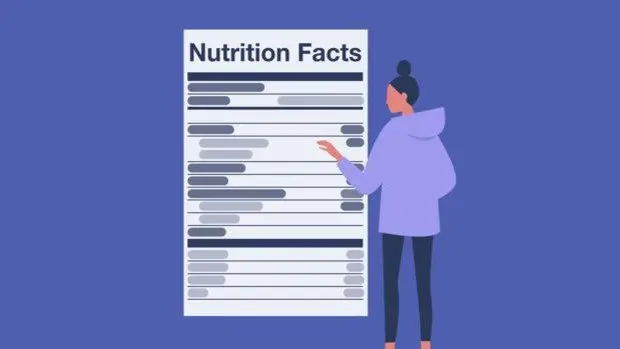Contents
Why Not All Low Calorie Foods Are Healthy
Tags
When looking at the label of a product, it is important to look at its amount of fat, sugar and salt

Labels deceive us: with a quick glance at the calories in a product and under the belief ‘less calories, healthier’, we put any product in the shopping cart. But this is as if we were faced with a double-bottomed wardrobe: behind the visible, much more hides. That’s when if you look closely at a food label, it goes further. How much sugar does it have, how much saturated fat, how much salt … and that is where we see if a product is really healthy or not.
La nutritional informationl of a product is one of the two keys to see if that food suits us or not.
Laura Isabel Arranz, doctor in nutrition, pharmacist and dietician-nutritionist, explains how we should interpret this part of a label.
The first thing you see is the energy content, that is, the calories. It is important to note that because a product has few, this does not mean that it is necessarily healthy. Then you see the total fats and, most importantly, the saturated. These, says the nutritionist, “should be in the least amount possible to protect our health.” The next thing to be found are carbohydrates and within these, a key part: added sugars. Also, we will find the information related to the amount of protein and salt that the product has. So the key to this is not calories, but fat, sugar, and salt. The less saturated fat, sugar and salt, the healthier a product will be.
In addition, the table contains information on the amount of fiber, some types of fats such as monounsaturated or polyunsaturated, or the amount of vitamins and minerals. “In the latter case, we will have to find the% of these vitamins and minerals that the product provides with respect to the reference values for daily consumption, so we can assess whether they contribute a lot or a little,” says the professional.
What does the ‘E’ with a number behind it mean on the labels?
When we see, in the list of ingredients of a product, an ‘E’ (that is, something similar to E621 or E303, for example), what these nomenclatures indicate are nothing more than the additives that a product carries.
Beatriz Robles, food technologist and food safety expert, assures that, before being able to use the additives, they have to pass some security controls. Juan José Samper, author of the book ‘Definitive guide to interpreting food labels’, comments that additives are used in preparation for various purposes, such as coloring, preservation, flavor strength, sweetening, etc. . “Additives are safe, but they must be viewed with great caution. My recommendation is to avoid them if possible “, says Juan José Samper and points out that” there are many opinions on the matter, and on countless occasions they are opposed “.
On the other hand, it is important to look at the list of ingredients. When analyzing it, you have to look at several things. Laura Isabel Arranz explains that, in a product that has added sugars, “it is not the same that the sugar appears first or fourth.” The order in which the ingredients are presented is very important, always from highest to lowest quantity. Another general warning that nutritionists make is that it is important that the first product that appears in the list of ingredients is the same that is advertised on the ‘packaging’. For example, if we buy peanut butter, the first ingredient should be peanut, just as if we buy milk chocolate, the first ingredient should be chocolate, and not sugar, as can happen in some cases.









